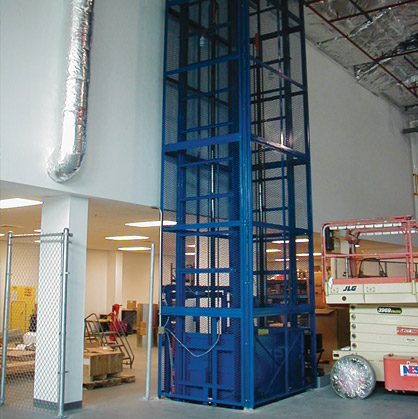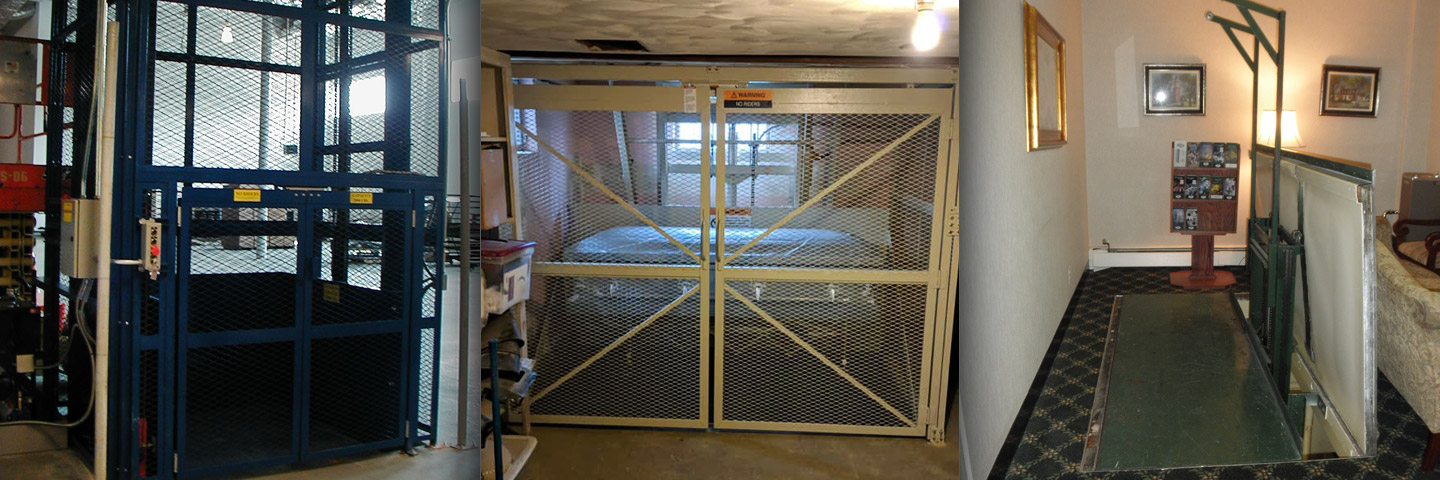Material Handling Lifts
What are Material Handling Lifts?
Also known as vertical reciprocating conveyors (VRC), material handling lifts move materials in factories, warehouses, industrial plants, institutions or anywhere that products or supplies need to move from one level to another. Vertical Reciprocating Conveyors are not elevators. In fact, they have their own national code (ASME B20.1) and are specifically exempt from the national elevator code. Vertical Reciprocating Conveyors provide fast, efficient, convenient and safe access to/from mezzanines, balconies, basements, and between levels in multiple story buildings. They can be installed for through-floor, interior or exterior applications. The principal components of Vertical Reciprocating Conveyors include guide columns, carriage and a mechanical or hydraulic actuating mechanism.
What are the benefits of using a Material Handling Lift?
- Safe, efficient, convenient means of moving materials vertically.
- Less costly to install, operate and maintain than elevators.
- Safer than using a forklift to move materials between levels.
- Moves loads of all shapes, sizes and weights from 1 lb. to 200,000 lbs.
- Designed for mezzanines, through-floor and other multi-level applications.
- Meets or exceeds OSHA regulations.
- Equipped with advanced safety features to protect people and materials.
Material Handling Lifts can be installed in new buildings or in existing buildings with unused elevator shafts, and they can be customized to your application needs. Their hydraulic, mechanical systems make it a safe, efficient, convenient means of moving materials vertically.



